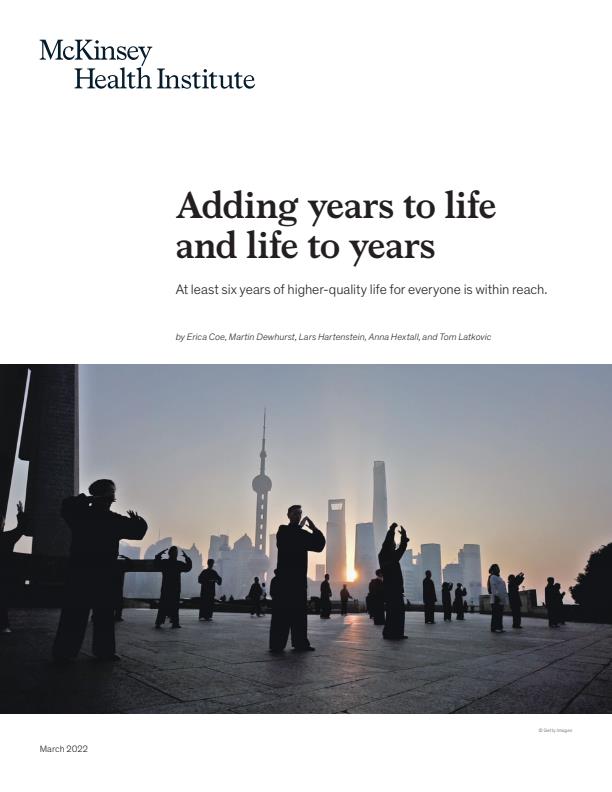Erica Coe, Martin Dewhurst, Lars Hartenstein, Anna Hextall, and Tom Latkovic

This is a decisive moment in the history of human health.
In many respects, health is a remarkable success story. Over the past century, life expectancy has dramatically increased in most parts of the world. But the portion of life we human beings spend in moderate and poor health hasn’t changed, meaning we spend more years in poor health than at any point in history. Moreover, significant inequity continues to exist across and within countries.
We can do better—quickly.
Humanity mobilized against COVID-19 at a speed and scale previously unseen. While far from perfect, our success should inspire us to challenge what we think is possible. At its best, our response to COVID-19 demonstrates that when resources and motivation coalesce, scientific breakthroughs and large-scale behavior change are possible in very short periods of time.
It’s time to set a new, more ambitious, more relevant goal for human health—a goal that galvanizes across continents, sectors, and communities to support everyone on the planet in adding years to their lives and life to their years. Humanity needs a goal that yields more time with loved ones, more accomplishments, and more time free from cognitive or physical impairment.
As a starting point for discussion, the McKinsey Health Institute (MHI) believes that over the next decade humanity could add as many as 45 billion extra years of higher-quality life—roughly six years per person on average, and substantially more in some countries and populations.1
Achieving this objective requires us, as a society, to challenge our beliefs about health and reorient material portions of public policy and the economy.
Achieving this objective requires us, as a society, to challenge our beliefs about health and reorient material portions of public policy and the economy. It requires embracing a modernized understanding of health, including physical, mental, social, and spiritual health2 , and the full richness of factors that influence those elements of holistic health. It requires viewing health as an investment, not an expense. It requires scaling solutions that work, which could address 40 percent of the disease burden.3 It requires dramatically more innovation and leadership from institutions outside of the traditional healthcare industry. It requires fully empowering individuals to steward their own health.
Every institution, every leader, and every person has an important role to play.
Special Report
No comments:
Post a Comment